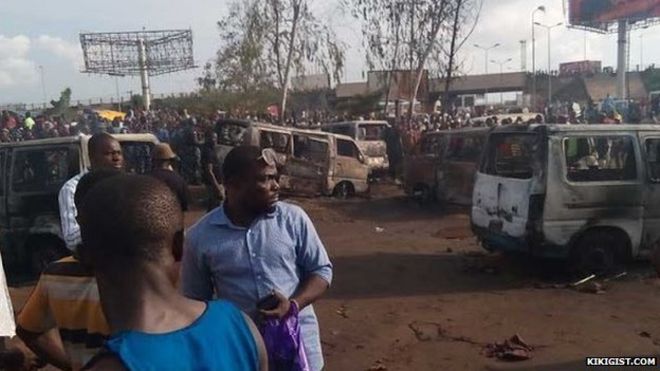
Rescuers fought bad weather on Tuesday as they searched for more than 400 people, many of them elderly Chinese tourists, missing after a cruise boat was buffeted by a freak tornado and capsized on the Yangtze River.
The accident on Monday night is likely to end up as China's worst shipping disaster in almost 70 years.
Divers and other rescue workers pulled five people they found trapped in the upturned hull of the four-deck Eastern Star, a fraction of the 458 people state media reported were on board when the ship capsized.
Distraught relatives of some of the passengers scuffled with officials in the city of Shanghai, where many of those on board booked their trips, angry about what they said was a lack of information.
Dozens of rescue boats battled wind and rain to reach the ship, which lay upturned in water about 15 meters (50 feet) deep.
The Xinhua news agency said rescuers could hear people calling for help from inside the ship's hull and television showed rescuers cutting through it with an angle grinder.
One of the people pulled from the capsized boat was a 65-year-old woman. Divers fixed breathing equipment to her nose and mouth to bring her up from under the water.
About another dozen people had been rescued and six bodies recovered, media reported, leaving more than 430 people unaccounted for.
China's weather bureau said a tornado hit the area where the boat was, a freak occurrence in a country where tornados do happen but are not common.
The disaster could bring a bigger toll than the sinking of a ferry in South Korea in April 2014 that killed 304 people, most of them children on a school trip.
The People's Daily, which published a passenger manifest on its microblog, said those on board the Eastern Star ranged in age from three to more than 80.
Tour guide Zhang Hui, 43, told Xinhua the boat sank very fast and he scrambled out a window in torrential rain, clutching a life vest as he could not swim.
"Wave after wave crashed over me; I swallowed a lot of water," Zhang said, adding that he was unable to flag down passing boats and finally struggled ashore as dawn broke holding onto a branch.
President Xi Jinping had ordered that no efforts be spared in the rescue and Premier Li Keqiang went to the scene of the accident in central Hubei province, Xinhua said.
About 60 family members gathered outside a travel agency in Shanghai and demanded information.
"I only found out about this on the television news while I was at work and I came here," said 35-year-old Wang Sheng, whose said his mother and father were on board. "I cried all the way here and here I can't find anyone, the door is locked."
CAPTAIN DETAINED BY POLICE
The ship's captain and the chief engineer, who were among the few to be rescued, had been detained by police for questioning, Xinhua said.
According to the Yangtze River navigation administration, the pair said the ship sank quickly after it was caught in the tornado.
Xinhua reported that initial investigations had found the ship was not overloaded and it had enough life vests on board for its passengers. Those rescued were wearing life vests, Xinhua said.
Among those on board were 406 tourists, many of them elderly, along with 47 crew members and five tour guides, the People's Daily said.
State radio said the ship went over in about two minutes and no distress call had been issued. Seven people swam to shore to raise the alarm, media said.
Fishing boats were among the dozens of vessels helping in the search and rescue, Xinhua said, and more than 1,000 police with 40 inflatable boats had also been sent.
The Eastern Star, which has the capacity to carry more than 500 people, was heading to southwestern Chongqing city from Nanjing, capital of Jiangsu province. It sank at around 9:28 p.m. in the Jianli section of the Yangtze, Asia's longest river.
Accidents of this magnitude are uncommon in China where major rivers are used for tours and cruises. A tug sank on the Yangtze while undergoing sea trials in January, killing 22 of 25 people on board.
In the worst previous incident of its kind in China, the steamship Kiangya blew up on the Huangpu river in 1948, killing more than 1,000 people.
The Eastern Star is owned by the Chongqing Eastern Shipping Corporation, which runs tours along the Three Gorges section of the Yangtze.
Wang Jianhua, its vice general manager, said it had never suffered an incident of this magnitude. The official Hubei Daily said the company has been operating since 1981.
Tuesday 2 June 2015
http://news.yahoo.com/chinese-ferry-458-aboard-sinks-storm-12-rescued-001452986--finance.html



